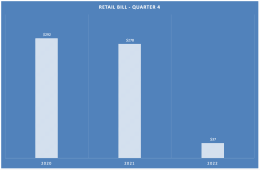SignatureSolarJames
Try Solar, the Grid will always take you back
Guys, I figured I would start a thread here, I only ask that all comments contain math in them as this is a math problem, too many words only comments on other threads IMO
here are the numbers I am seeing in Texas:
1600kwh/kw/year (grid tied) -battery system inefficiency (~10%) =1440kwh/kw/year
Let's do a 2000kwh per month target
-16.7kW of solar needed @ $9k
-30kwh of LFP batteries at 46% nighttime vs daytime usage @$9k
-12kw ac output inverter/ inverter stack with mppts for DC coupling @ $3k for 6.5x2 or $8300 for solark 15k
-roof racking (ground mount will add) at $.10/watt @ $1600
-Wiring at $700
-Rapid shutdown at $.05/watt @ $800
$24100 for "basic"
$29400 for SLRK//Deye
if average life of parts is 20 years then 480000 kwh in the lifespan
24100 + rebuild fee x2 ($1000 for stack) $26100 Divide by 480,000 kwh = .054/kwh - 30% = 3.8 cents per kWh
if your cost of capital is a 20 year 6% loan then $18270 after credit = $31414 total payments = 6.5 cents per kWh
If you get an installer to be fair and do the work for $15k in 2 days tops then you say $24100+ $15000 - 30% = $27,370 = 5.7 cents per kWh
if your cost of capital is a 20 year 6% loan then $27370 after credit = $47060 total payments = 9.8 cents per kWh
All of this is under the 12-cent mark and 12 cents WILL go up at a rate exceeding inflation over the next 20 years
there are other pitfalls/ mods here but the 20 year life is unfair to the panels, they are 33% + of the costs and they will go for 30 years, ground mount bifacial may have a higher ROI as well, SLRK/Deye style inverters add 20% here but that is still in the ballpark, and we know those are coming down drastically in the next 2 years (which will make installing easier and ownership trouble less) The SLRK/Deye style most likely will have an overhaul cost at 10-12 years average, Schneider may outlast them but will not see a reduction in costs coming up
Post anything that can modify this equation please
here are the numbers I am seeing in Texas:
1600kwh/kw/year (grid tied) -battery system inefficiency (~10%) =1440kwh/kw/year
Let's do a 2000kwh per month target
-16.7kW of solar needed @ $9k
-30kwh of LFP batteries at 46% nighttime vs daytime usage @$9k
-12kw ac output inverter/ inverter stack with mppts for DC coupling @ $3k for 6.5x2 or $8300 for solark 15k
-roof racking (ground mount will add) at $.10/watt @ $1600
-Wiring at $700
-Rapid shutdown at $.05/watt @ $800
$24100 for "basic"
$29400 for SLRK//Deye
if average life of parts is 20 years then 480000 kwh in the lifespan
24100 + rebuild fee x2 ($1000 for stack) $26100 Divide by 480,000 kwh = .054/kwh - 30% = 3.8 cents per kWh
if your cost of capital is a 20 year 6% loan then $18270 after credit = $31414 total payments = 6.5 cents per kWh
If you get an installer to be fair and do the work for $15k in 2 days tops then you say $24100+ $15000 - 30% = $27,370 = 5.7 cents per kWh
if your cost of capital is a 20 year 6% loan then $27370 after credit = $47060 total payments = 9.8 cents per kWh
All of this is under the 12-cent mark and 12 cents WILL go up at a rate exceeding inflation over the next 20 years
there are other pitfalls/ mods here but the 20 year life is unfair to the panels, they are 33% + of the costs and they will go for 30 years, ground mount bifacial may have a higher ROI as well, SLRK/Deye style inverters add 20% here but that is still in the ballpark, and we know those are coming down drastically in the next 2 years (which will make installing easier and ownership trouble less) The SLRK/Deye style most likely will have an overhaul cost at 10-12 years average, Schneider may outlast them but will not see a reduction in costs coming up
Post anything that can modify this equation please






